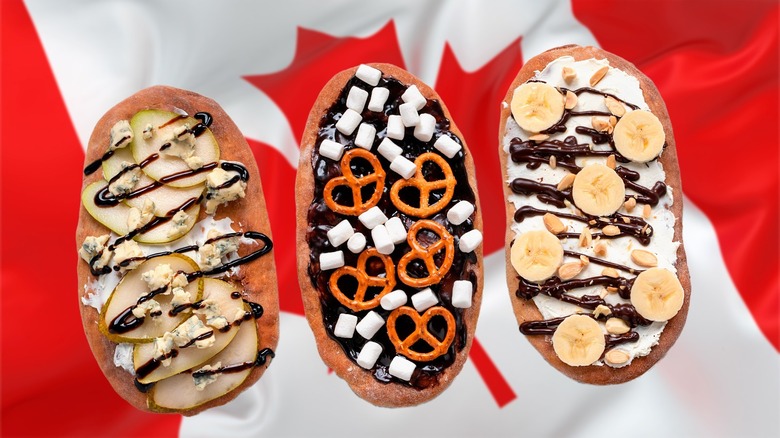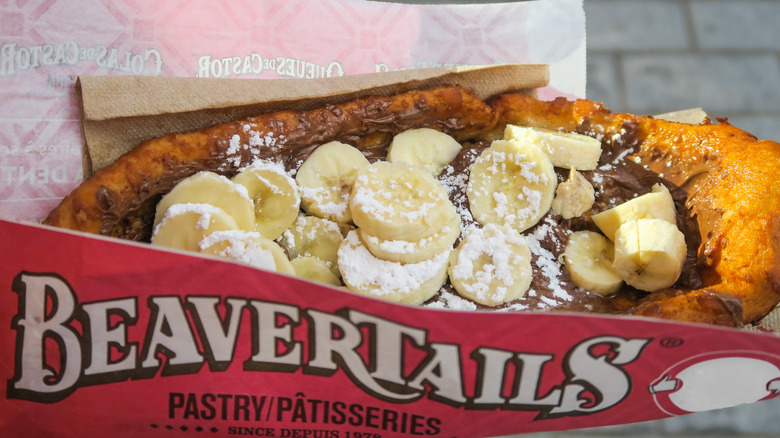The Multiethnic Roots Of Canada's Beaver Tail Pastry
Stroll into a Canadian establishment to order a BeaverTail, and you'll be treated to a fried pastry dressed with all manner of sweet treats. One bite, and you'll understand why it's an iconic Canadian food you need to try before you die. But what's with the beaver part of the name? Just one of many foods that have unusual names, you won't be chowing down on the animal when you order a BeaverTail today, though part of the treat's origin does connect back to literal beavers. This semi-aquatic mammal has long been an integral part of indigenous Canadian culture, providing thick, warm fur that was key to making it through harsh northern winters. Later, indigenous hunters found that Europeans were keen on buying up beaver pelts, which then formed the keystone of a large and powerful fur trade.
The modern pastry was named the BeaverTail because its long, oval shape looked like — you guessed it — a beaver's tail, which had also served as a food source in its own right. However, while the indigenous use of the beaver is part of the story, it's not the only food culture that's connected to the beloved BeaverTail pastry of today.
The other side of the BeaverTails origin story
There's another can't-miss element of the BeaverTail's multiethnic origin story. The BeaverTail treat was first served by Pam and Grant Hooker at the 1978 Killaloe Fair, near Ottawa in the Canadian province of Ontario (perhaps we should add it to our list of best fair foods). The recipe was courtesy of Grant's German grandmother, who routinely fried up pastry dough and slathered it with sweet, rich toppings for a breakfast treat. Favorites included butter, honey, jam, and cinnamon mixed with sugar. While we can't confirm whether Grant's oma was inspired by pastries from the home country or was a culinary inventor herself, German bakers have definitely come up with many delicious variants of fried dough (often dusted with sugar), including schmalzgebäck and räderkuchen.
By the time it was served up at the Killaloe Fair, the Hooker family had refined the recipe and cut down on the cooking and preparation time. The Hookers' daughter made the connection between the shape of the pastry and the tail of a beaver, leading to the BeaverTail name (now a registered trademark). It proved so popular that the Hookers set up two Ottawa shops to sell the BeaverTail.
By the early 2000s, it was run by Pino Di Ioia, who moved operations to Montréal and helped to establish Quebec as the biggest BeaverTail market. Today, it's a Canadian stalwart with international locations in the U.S., Japan, France, and the United Arab Emirates.

